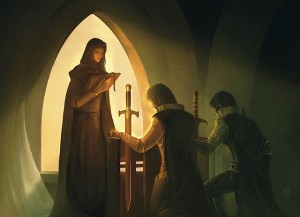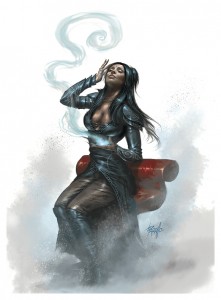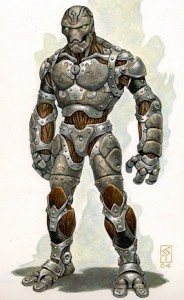 When the encounter’s called “The Death of Aldus Splintershield” it’s a safe bet that the party is in for one hell of a fight. After defeating the infected foresters last week, Brother Splintershield allowed for only a short rest before the party continued deeper into the woods to discover the source of the strange plague infecting the men and animals.
When the encounter’s called “The Death of Aldus Splintershield” it’s a safe bet that the party is in for one hell of a fight. After defeating the infected foresters last week, Brother Splintershield allowed for only a short rest before the party continued deeper into the woods to discover the source of the strange plague infecting the men and animals.
A good DM learns from his mistakes. I’ve certainly made plenty of mistakes as a DM. This week I had the opportunity to learn from one I made just a few weeks ago at D&D Encounters. During Week 3the party explored the ruins of Castle Inverness. Unfortunately the only 1-inch scale battle map provided was for the corner of the keep where the monsters were hiding. As soon as the players saw this, they knew that nothing “important” was likely to happen anywhere else.
Last week I tried to emphasize that just because there’s a map doesn’t mean that there’s certainly going to be combat or that there’s even any threats present. The result of my craftiness regrettably ended with Belgos the Dragonborn murdering Steve… poor guy.
This week I tried to learn from my Week 3 mistake. I didn’t produce the 1-inch scale battle map until it was actually time for combat. I found a copy of the Harken Forest online in the Wizards forums. I printed a colour copy on an 11 x 17 page and presented this to the players. Without a clear indication of where the battle would take place, they were extremely cautious when exploring.




